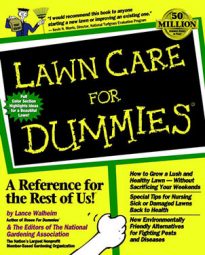Here’s the cold, hard truth about lawn diseases — most are very difficult to identify properly. Lawn diseases are hard to tell apart and easy to confuse with other problems, such as insect damage and even simple physical maladies like fertilizer burn. If you can’t identify the disease, you’ll have a hard time fixing it.
To identify lawn diseases, descriptions aren’t enough. You need to look for more help to properly identify the problem. The best place to find that help is through your local cooperative extension office. Cooperative extensions have, or can lead you to, properly trained professionals who can diagnose the problem. Even those pros may have to grow the organism in a laboratory to find out exactly what it is and tell you how to deal with it.
But even before professionals can perform their magic, you need to provide them with a sample and as much information as possible. The more information you offer, the better. Following is the information the professionals probably need:
A sample of the lawn: A square foot of 2-inch-deep sod taken from an area where the problem is just starting to show itself is ideal. You can get by on less, but just make sure that you take the sample from the right place: Half should be healthy lawn; the other half should be just starting to show symptoms. If you must mail the sample somewhere to be checked, ask them how to wrap and ship it.
Age, variety, and species of grass: It may be tough to provide this, but if you can tell how old the lawn is and the type of grass its made of, it helps.
Symptoms: How does the lawn look overall? Do you see dead patches? Where do they occur? What size, shape, and color are the patches? Do you see mushrooms? What do individual grass blades look like — spotted, melted, wilted? Do the grass blades pull up easily or stay attached to the roots?
Look for patterns. Do the spots run in a straight line? Is there any consistent relation to the location of the sprinkler heads? Do the spots follow the mowing lines? Do they follow the slope like runoff water?
How you care for the lawn: This includes general information about your soil, how you water, fertilize and mow. Have you applied any pesticides? (Don’t forget to include weed-and-feed products.)
History: When did you notice the problem? What was the weather like? Has there been any construction or painting on your house? Has anything like gasoline, alcohol, or fertilizer been spilled on the lawn? Write down any dates you can remember.
All this information may seem like overkill, but if you really have a serious problem that you believe is a disease organism, you can be on the way to a solution.

